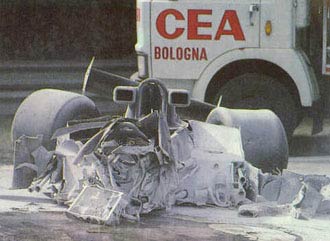Today, I awoke to the news that Professor Sid Watkins had died.
That may, or may not mean anything to you; it depends on whether or not you have knowledge of F1. Without Sid, F1 would not be as safe as it is today, working practices for track side safety would not be as they are.
I am going to try not to mourn his death, but celebrate his life for the 84 year old was a great man who pushed hard for improvements to safety on the track and worked hard at his ‘day job’ at Whitechapel Hospital in London.
No doubt much will be made of his friendship with Ayrton Senna, but I think distracts from his other work.
The Prof, or Sid as he liked to be known, was a neurosurgeon to trade and as such founded the Brain and Spine Foundation to help people with disorders that affected the brain and spine.
He saved the lives of Mikka Hakkinen, Martin Donnelly and Gerhard Berger. Rubens Barricello reckons he owes his life to Sid as well after his monumental crash in 1994, the same weekend that Ratzenberger and Senna died.
Sid’s story goes way back before that though, all the way to Brands Hatch in 1961 where he spent his free time being a trackside doctor. In the early days when he began working with Bernie Ecclestone at formula one, he would often bring his own medical supplies as the ones supplied at the track were few and far between. A far cry from today, I’m sure you’ll agree.
Improvements to safety kicked off in 1978 when Sid couldn’t get to Ronnie Peterson immediately after his crash at Monza because of the police blocking his way. Watkins demanded a medical car, an anaesthetist, a helicopter and better safety equipment, most of which Bernie had in place for the very next race.
I celebrate his life, Sid Watkins, the man who looked after the people who lived and raced in the fast lane, but Ill leave you with a quote from Ron Dennis "Today the world of motor racing lost one of it's true greats," said McLaren chairman and former team principal Ron Dennis, whose cars took Senna to all of his titles, in a statement.
"No he wasn't a driver. No he wasn't an engineer. No, he wasn't a designer. He was a doctor and it's probably fair to say that he did more than anyone, over many years, to make Formula One as safe as it is today.
"Many drivers and ex-drivers owe their lives to his careful and expert work, which resulted in the massive advances in safety levels that today's drivers possibly take for granted."
Says it all really.
(some pictures courtesty of richardsF1.com)





